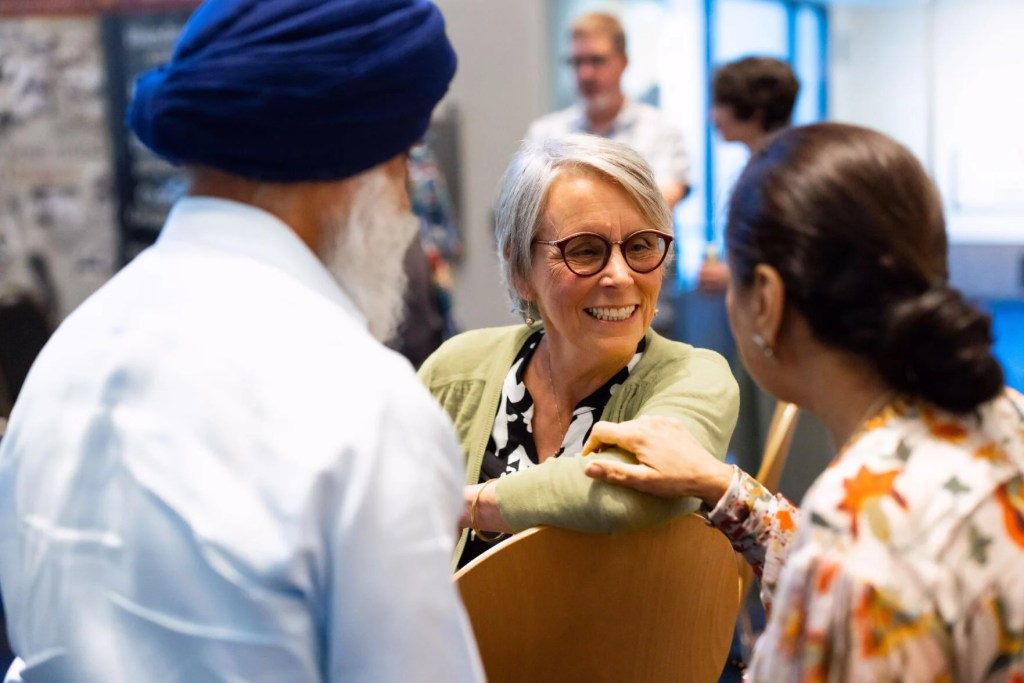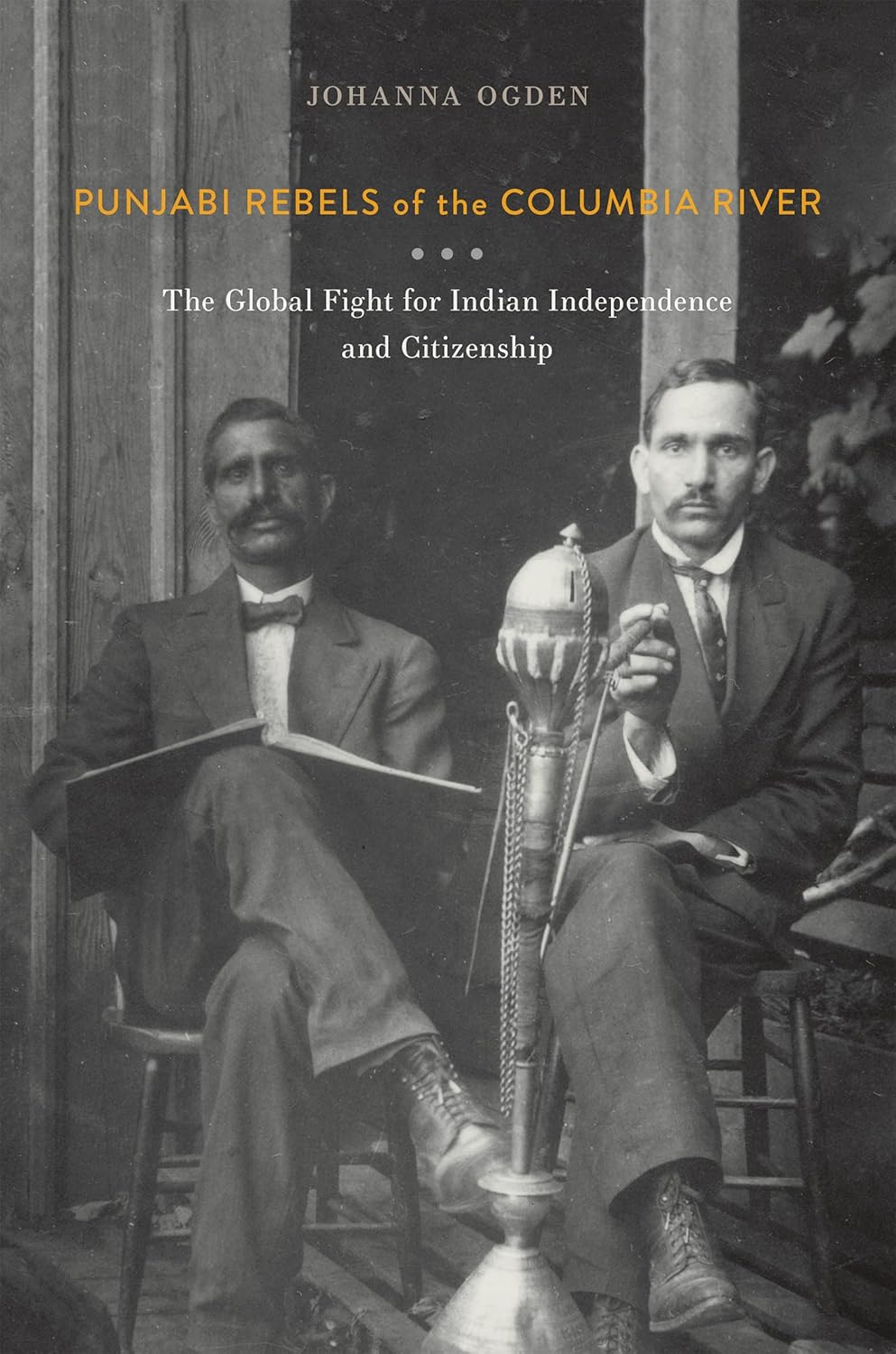‘It’s been a silenced history’
Published 9:30 am Friday, August 2, 2024

- Historian Johanna Ogden at a book launch event in Portland. (Kitta Bodmer)
Johanna Ogden has spent more than a decade researching — and working to preserve — the stories of people from India who lived in towns along the Columbia River, including Astoria, during the early 20th century.
In a new book, the Portland-based historian frames these often-overlooked stories within broader contexts.
“Punjabi Rebels of the Columbia River: The Global Fight for Independence and Citizenship,” tells the story of the Ghadar movement, a radical political party formed in Astoria that sought Indian independence from British colonial rule, inspiring later movements in the years leading up to India’s independence in 1947.
The book also details a related U.S. Supreme Court citizenship case involving Bhagat Singh Thind, who was a supporter of the movement.
“It gets to some really deep questions about the constitution of race, the constitution of citizenship, how those are built in, I believe, to our current times,” Ogden said. “You start pulling on these threads about, ‘Why did something happen?’”
‘Ghadar’
“Ghadar,” a Punjabi or Urdu word derived from Arabic, translates as “mutiny” or “rebellion.”
The movement, once thought to have started in San Francisco, began in 1913 at Astoria’s Finnish Socialist Hall. There, a group of workers, mostly Sikhs from the Punjab region of northern India, gathered to hear a lecture by Har Dayal, a Stanford University professor and Indian revolutionary.
Ogden believes there was reason behind the choice.
“For Indians, the Finnish Socialist Hall was not simply a convenient rental, but an invigorating and welcoming milieu for their radical dreams,” she writes. “Likewise, their choice of Astoria as the place to establish Ghadar was no accident.”

“Punjabi Rebels of the Columbia River” by Johanna Ogden.
Ogden characterizes Astoria as having had “broad radical sympathies and a measure of ethnic tolerance,” especially when compared to the St. Johns neighborhood of Portland, which had a similar Punjabi population but was in the wake of a violent anti-Indian riot.
Around the time of Ghadar’s founding, a few hundred Indians called Oregon home.
Except for one Astoria family, the Dhillons, who lived with four children in Alderbrook, they were almost exclusively men.
Most worked in lumber mills and on railroads. In Astoria, many lived in company bunkhouses or stand-alone cabins along the waterfront in an area near the Hammond Mill known as “Hindu Alley.”
“The Indian community was small,” Ogden writes. “It comprised almost exclusively laborers who owned little in the way of businesses or land, and who formed no gurdwaras or other cultural institutions. Instead, in Oregon they built more ephemeral and informal community at work, in living quarters, at sporting contests, and ultimately, in politics.”
After establishing itself in Astoria, the Ghadar movement shifted its headquarters to San Francisco, where it began printing the weekly newspaper Hindustan Ghadar.
When Ghadar left, Thind stayed behind.
Thind, who lived in Astoria, later enlisted and served in the U.S. Army, and applied for United States citizenship. Two of his requests were initially granted, but an appeal sent his case to the U.S. Supreme Court, where it was denied.
“The high court’s 1923 opinion in U.S. v. Bhagat Singh Thind disqualified Indians from citizenship for not being white,” Ogden writes, adding that the verdict “barred future immigrants from India for decades.”
“It’s a monumental history,” Ogden said, reflecting on the contrast between Ghadar and Thind. “You have these two huge expressions of Indian belonging.”
Research
Ogden became interested in researching the history of Indian migration and social movements in the Pacific Northwest as a graduate student studying history at the University of British Columbia.
A professor at Reed College called to her attention the presence of Sikhs in Oregon, so she began looking through books written by Indian scholars. To her surprise, over several pages of one author’s book were the names of familiar Oregon towns.
“From the other side of the world, it kind of blew me away. He was talking about Astoria, Bridal Veil, Wauna, Linnton, and from there, I just started driving to all the cities and looking through records,” Ogden said.
Her research led to courthouses, libraries and intelligence records, and to documents kept by archivist Liisa Penner at the Clatsop County Historical Society.
Penner had previously compiled records on Astoria’s Punjabi community for “Turbans,” a documentary film made by Erika Surat Andersen, a descendant of the Dhillon family, based on her grandmother’s childhood experiences between 1916 and 1922.
That year, the same year the Great Astoria Fire destroyed much of the city’s downtown, the Hammond Mill burned, and most of the Punjabis who worked there left. Until recently, their history has been relatively unknown.
“If it wasn’t for Liisa’s work, people in Astoria would have no idea about it,” she said. “I think it’s been a silenced history. I think most of us didn’t know.”
In 2012, Ogden helped bring attention to the subject when she published an article for Oregon Historical Quarterly, the peer-reviewed public history journal of the Oregon Historical Society, on the Ghadar movement.
The following year, she took her research to the city of Astoria, in a letter to former Mayor Willis Van Dusen.
“As mayor, chances are, you get your share of unusual requests,” the letter said. Ogden continued that she hoped to “add another one, but I hope you might find this one interesting enough to pursue further.”
The city did pursue it further.
In October 2013, it hosted an event commemorating the 100th anniversary of Ghadar’s founding. Ogden was the project’s consulting historian, and hosted a discussion at the Liberty Theatre.
“One of the joys of this project has been the many new people I have met,” the author writes in a book acknowledgment. “I am indebted to the community … who advised me and made this history come alive in ways few historians are privileged to experience.”
New book
“Punjabi Rebels of the Columbia River: The Global Fight for Indian Independence and Citizenship”
Oregon State University Press — 296 pp — $29.95




